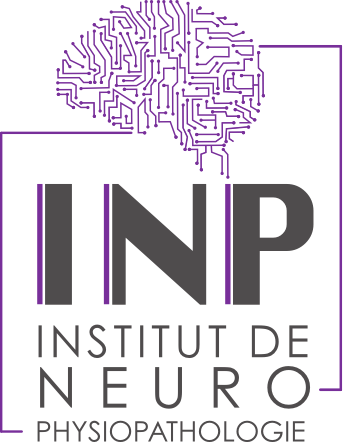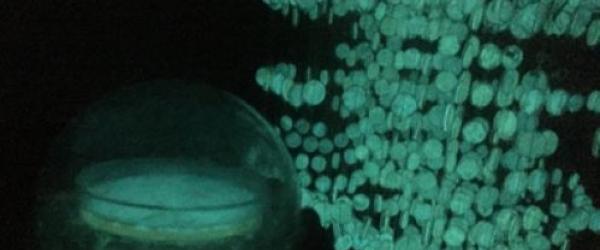During the last NeuroFrance congress held from May 22 to 24, 2019 at the Palais des Congrès in Marseille, the INP distinguished itself through 20 posters, 4 oral communications, and 1 symposium moderation, not to mention the organization of the "Art in Mind" exhibition, showing not only the richness and quality of his research but also his open-mindedness.
During the last NeuroFrance congress held from May 22 to 24, 2019 at the Palais des Congrès in Marseille, the INP distinguished itself through 20 posters, 4 oral communications, and 1 symposium moderation, not to mention the organization of the "Art in Mind" exhibition, showing not only the richness and quality of his research but also his open-mindedness.
Chair :
- François Féron, co-chair of the symposium « Training the next generation of neuroscientists: scientific misconduct and publication ethics » and organizer of the « Art en tête » exhibit.
Symposia :
- Maxime Bonnet, S21.5 - Functional recoveries after a cervical spinal cord injury and implantation of a thermosensitive hydrogel in rat
- Anne-Marie François-Bellan, P2.126 - Effect of the long non-coding RNA Neat1 knock-down on the circadian transcriptome in a rat pituitary cell line
- Bruno Gepner, S02.3 - EEG signature of the beneficial effects of slowness in autism. / Une signature EEG des effets bénéfiques de la lenteur dans l'autisme.
- Christophe Leterrier, S11.5 - The axonal cytoskeleton: a nanoscale view / Le cytosquelette axonal à l´échelle nanoscopique.
Posters :
- Laurie Arnaud, P1.055 - Human induced pluripotent stem cell-based Alzheimer's disease modeling reveals APOE4 as a modulator of inflammation
- Kevin Baranger, P1.059 - The pro-amyloidogenic effects of membrane-type-matrix metalloproteinase involve MMP-2 and BACE-1 activities, and the modulation of APP trafficking
- Dominic Bingham, P1.003 - Organization and role of actin at the presynapse
- Angélique Bole, P1.005 - Time course of α-actinin-2 expression within the dentate gyrus during epileptogenesis in the rat pilocarpine model of mesial temporal lobe epilepsy suggests its role in dendritic spines plasticity of hippocampal granule cells
- Jean-Philippe Dales, P1.042 - Gene expression profiling and pathway analysis in brain-derived microvascular endothelial cells treated with TWEAK and TNF cytokines
- Patrick Decherchi, P1.116 - Delayed syngeneic transplantation of nasal olfactory stem cells improves locomotion and axogenesis after peroneal nerve injury
- François Devred, P2.056 - Detecting brain diseases via plasma profiling
- Eric Di Pasquale, P2.057 - Concomitant modification of synaptic activity by IL-1ß and metalloprotease MT5-MMP in primary cortical cultures
- François Feron, P1.122 - Cholecalciferol (vitamin D3) reduces rat neuropathic pain by modulating opioid signaling
- Laura García González, P2.072 - MT5-MMP affects the stability of β-CTF of amyloid precursor protein, which may constitute a new potential pathophysiological mechanism in Alzheimer´s disease
- Gaelle Guiraudie-Capraz, P2.114 - The brain smells and tastes the self - lessons from the Allen Brain Atlas
- Audrey Jacq, P2.126 - Effect of the long non-coding RNA Neat1 knock-down on the circadian transcriptome in a rat pituitary cell line
- Michel Khrestchatisky, P2.051 - Development of neurotensin analogues conjugated to a brain penetrant peptide that induce hypothermia and promote efficient neuroprotection in vivo and in vitro
- Grigorios Kyriatzis, P2.052 - Expression and distribution of Neurotensin receptors in wild-type and epileptic conditions in relation to the neuroprotective effects of vectorized Neurotensin (VH-NT)
- Anaïs Marie, P3.051 - Implication of vitamin A in neuroprotection of dopaminergic neurons in a rat model of Parkinson's disease
- Alessandra Pagano, P2.049 - The Microtubule-associated protein Tau as a new putative therapeutic target in brain cancer
- Dominika Pilat, P3.126 - MT5-MMP may influence early stages of Alzheimer´s disease through the control of neuroinflammation and amyloidogenesis
- Kevin Sadelli, P3.082 - Therapeutic potential of autologous transplants of ecto-mesenchymal olfactory stem cells (EMs-OSCs) to repair hippocampal damage
- Elodie Salebert, P3.148 - Executive functions and emotions in Alzheimer patients
- Aurélie Soubéran, P3.042 - Inhibitor of apoptosis proteins determine glioblastoma stem-like cells fate in an oxygen-dependent manne
- Jean Claude Stamegna, P3.089 - Syngeneic grafts of Olfactory Ecto-Mesenchymal Stem Cells restore breathing and locomotor functions in an acute rat model of high cervical contusion
- Evgeni Zernii, P1.033 - Oxidative stress-induced disulfide dimerization of neuronal calcium sensor proteins
More information on the NeuroFrance 2019 congress website

